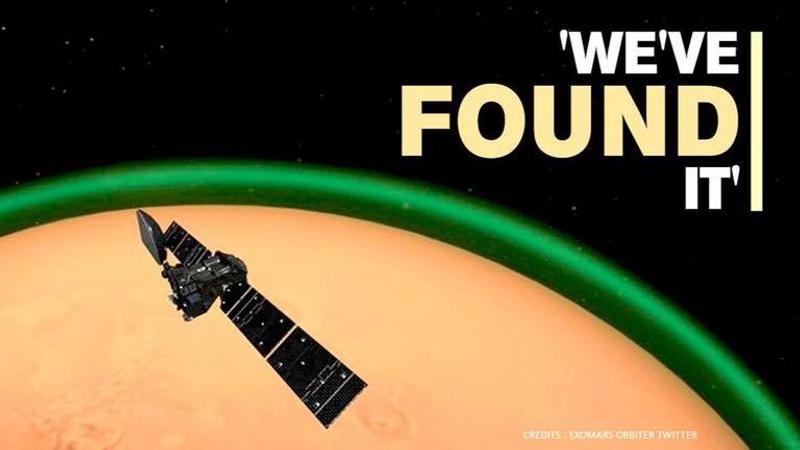Published 17:34 IST, June 18th 2020
Green glow detected in atmosphere of Mars: What does it mean for researchers?
Scientists’ several years of quest finally ended when European Space Agency's Trace Gas Orbiter (TGO) detected glowing green oxygen in the atmosphere of Mars.

Scientists’ several years of quest finally ended when the European Space Agency's Trace Gas Orbiter (TGO) detected glowing green oxygen in the atmosphere of Mars. This is ‘for the first time’ that this type of emission is spotted in planet other than Earth where the glowing oxygen can be seen on the poles because the energetic electrons from the space hit Earth’s upper atmosphere. The TGO has been orbiting Mars since October 2016 and this type of emission was predicted to exist in martian planet's atmosphere for nearly 40 years. On June 15, the scientists finally “found it”.
How is this study important?
However, the significance of this observation is that by studying the glow of planetary atmospheres can provide an insight into the composition as well as the dynamic of an atmosphere. Moreover, these particles will enable scientists to know how energy is deposited by both Sun’s light and the solar wind. The emissions that are seen on Earth is because of the “night glow”. In other words, the atoms of oxygen on the planet are emitted on a specific wavelength of light which is captured “best” from an ‘edge-on’ perspective.
The study said, “Understanding the properties of Mars’ atmosphere is not only interesting scientifically, but is also key to operate the missions we send to the Red Planet."
"Atmospheric density, for example, directly affects the drag experienced by orbiting satellites and by the parachutes used to deliver probes to the Martian surface,” it added.
How did they do it?
Because the faintness of the glow was creating a barrier for the researchers to detect similar glow on Mars, co-author of the study published in Nature astronomy, Ann Carine Vandaele of the Institut Royal d'Aéronomie Spatiale de Belgique and Principal Investigator of NOMAD, explained that they decided to “reorient the UVIS nadir channel to point at the ‘edge’ of Mars”. It was in a similar way these emissions are captured on earth from the International Space Station.
Therefore, Vandaele, Jean-Claude Gérard of the Université de Liège, Belgium, and lead author of the study and other scientists scanned altitudes, analysed datasets and found green oxygen emission from all of them. To enhance the understanding of the phenomenon and compare it to that on Earth, Jean-Claude explained that the researchers decided to model the emission. They found that it mostly produced carbon monoxide or it is broken into carbon monoxide and oxygen, its constituents. Moreover, these emissions are 16.5 times more intense than the ultraviolet rays.
“The observations at Mars agree with previous theoretical models but not with the actual glowing we’ve spotted around Earth, where the visible emission is far weaker,” said Jean-Claude. “This suggests we have more to learn about how oxygen atoms behave, which is hugely important for our understanding of atomic and quantum physics.”
Updated 17:47 IST, June 18th 2020



